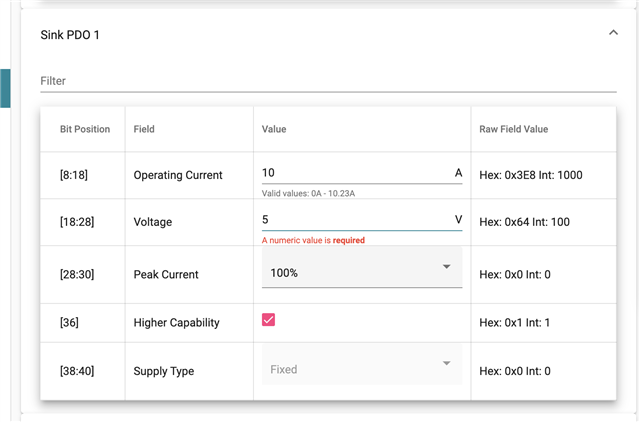Other Parts Discussed in Thread: TPS25751
Tool/software:
Hi! As the title describes, I'm wondering if it's possible to configure a GPIO event such that the pin is asserted high while a specific sink PDO is negotiated. The purpose of this is to only enable a downstream regulator when a required voltage has been met.
The TPS negotiator will only be configured with 2 PDOs, one the required basic 5v PDO and a high voltage 20V@3A PDO. To avoid the XY problem fallacy, the final objective is to ensure the aforementioned regulator is disabled while the negotiated voltage is below 20V, whether by means of disabling the sink path entirely if possible, or to de-assert a GPIO connected to its enable pin. Either of these solutions are satisfactory tome, so feel free to suggest either alternative if one isn't feasible.
I haven't figured out how to do either, since it seems like there isn't a GPIO event specific to when a high-voltage sink contract has been negotiated, only for source contracts. It also doesn't seem to disable the sink path while the low voltage PDO is active.





